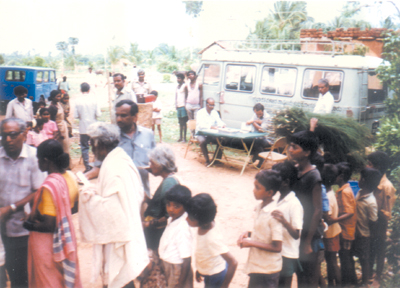2. THE FORMATIVE YEARS
2.5. The longitudinal survey
In 1961, the EPS undertook an illuminating study (RP/33 Annexure II) : The Longitudinal Survey, in which observations were repeated in the same population at a given interval over a period of five years by means of follow-up examinations. A rural population of about 65,000 living in 119 randomly selected villages of Bangalore district were examined repeatedly four times (0 - 1½ - 1½ - 2 years) during 1961-68. The following tools were used: tuberculin test (all ages), X-ray (five years and above) and sputum examination (for X-ray suspects). The survey was highly ambitious and was difficult to conduct due to a variety of practical difficulties and technical challenges.
It was planned that two teams would attempt to cover
minimum of 80% of the population for all the examinations. Some of the
problems associated with the field work have been elaborated in Chapter
3. The population being studied was highly mobile. There would be migration,
immigration, births and deaths. To establish identities after a lapse
of time for different examinations by different investigators was not
easy. A new methodology of census, identifying the individuals, houses,
location maps of households, etc., had to be developed. Data generated
from such a mobile population had to be collated so that examinations
conducted at different times had to go to the records of the identified
persons only. This was a new kind of data, a data flow of how TB behaved
in a population living in a particular area. It revealed the natural history
of TB in a general rural population, during the survey period. The report
was published in 1974, as to draw tenable inferences would take time and
much effort. The results of the survey are given in Chapter 3.
 Longitudinal survey Field work in progress |